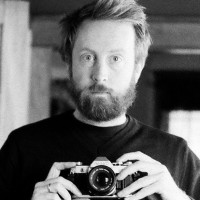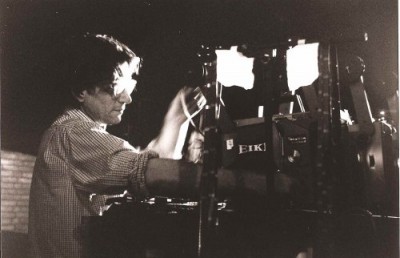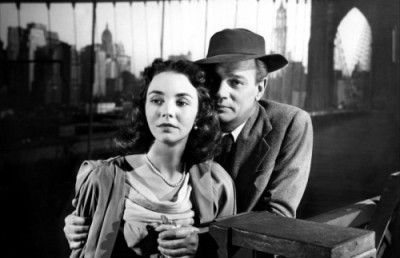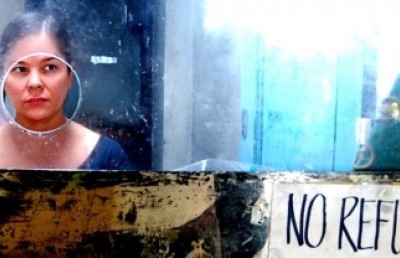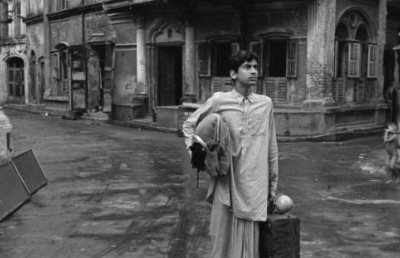Fictions Contre Fictions

“Words do not express thoughts very well. They always become a little different immediately after they’re expressed, a little distorted, a little foolish. And yet it also pleases me and seems right that what is of value and wisdom to one seems nonsense to another.”
- Somebody else said that
I’m a filmmaker of a certain kind, making work that touches on documentary and has formal/experimental interests. I program VISIONS, a monthly series of “experimental documentaries” or “experiments in documentary” or “experimental films with documentary interest”. As I write this I am reflecting mainly on the cinema of photography, representation and reproduction, less so abstract cinema. In mulling these things over I simply wrote down lists of fictions and counter-fictions that surround these practices in particular, and it is ignorant of other kinds of cinema.
What follows is naive, simple, sometimes practical but mostly impractical and definitely full of holes. It’s old-school, not very post-modern although it is fragmentary and full of plagiarism but that’s more by mess than design. It’s a series of starting points.
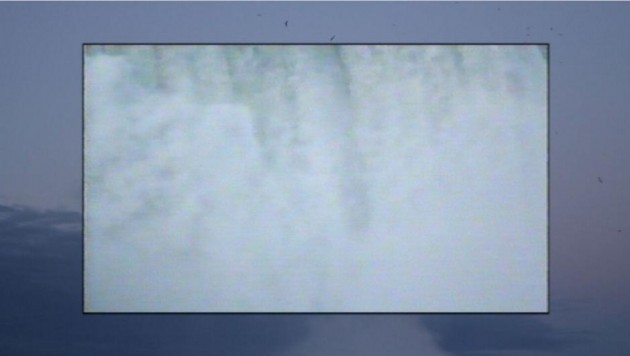
Souvenir No. 1 Benjamin Taylor, 2015)
I first fell under the influence and power of “fiction the seducer.” I worked in a video store when I was younger and watched movies all day long. Then came film school and I soon found it hard to accept the ego, the wastefulness and costliness of the genre and so, I turned to documentary. It seemed to me that at least this could shine in spite of its maker’s misgivings. However the “institution of the camera” or the “camera as institution” soon turned me bitter towards documentary – people with means providing self-satisfied documentary lovers with opportunities for conscious-cleansing.
…Faith in cinema.
I used to think, “I care more for the world than for films, they are but a medium,” but the more I worked on films the more I felt the necessity to look at my own looking and the looking of those watching those films. Rarely will a film change the world but it can change what is happening in the moment that it unravels on the screen. Now, I am under the influence and power of that moment. This is where my cinema and the films I programme attempt to function.
2. LANGUAGESThe means of cinema are so complex that anyone who has mastered them will naturally use them to convey whatever message or vision they may wish, whether or not it is ‘cinematic’ by any plausible definition. People use their languages to say what they wish to say, not what the language makes it easy to say.
3. UTOPIAWhen cinema turns in upon itself and that small moment in the dark expands into infinity, something truly interesting and truly cinematic happens. For that moment in the dark another temporary world is brought into existence. It erases our own and we can disappear and return, hopefully changed. Like true utopia it is a “no place.” Pictures have no tenses, they unfold in a perpetual present, just like visual perception itself, they cannot express either a past or a future. They can only really say, “Now. Now. Now.”
4. WHAT’S HAPPENING IN THIS ROOMThere is a large white rectangle in the room and we’re looking right at it. It’s the terrain of cinema, it’s where the real and its unreal image collide. The fact that we are sitting watching that screen is interesting before anything else that could be on it. The fact that there are bodies in this room. People. These actual people are interesting beyond what is on the screen. The cinema is a huge skull that resonates, vibrates, sings. It’s happening in our minds, behind our eyes. This is where visions happen. The miracle of the world and the miracle of the cinema.
5. THE ART OF SEEINGAny cat or dog can look at something, but only a human can see. Under ceaseless bombardment from photographic and electronic imagery daily, do we risk losing the gift of seeing? We can only see when all the chatter stops. To see is not to grasp a thing, a being, but to be grasped by it, by them.
We name things, with words and images, so we no longer need look at them and then we no longer see them. We have the word, the virtual, and we carry it within us. We fool ourselves into thinking we are self-sufficient. Language and the word get in the way of seeing God. But we use it because our hearts overflow and we need to share it with others somehow. And so, through imperfections and approximations we share, hoping it will be grasped. It is in these imperfections and approximations that art happens. The camera can become a technical means for mystical ends. Science can reveal the magic of the universe and science and magic should never be separated.
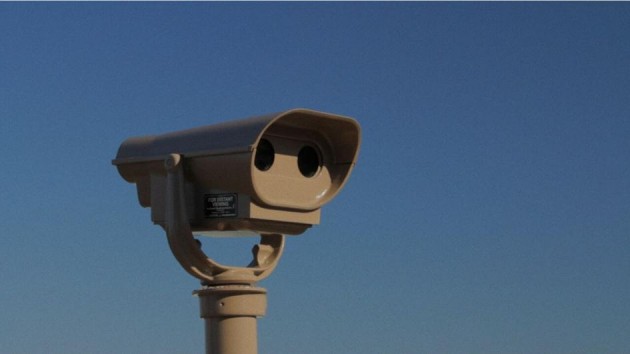
Niagara’s Fury (Benjamin Taylor, 2013)
How do we talk with images when they’re so hard to see now because there are so many of them? Water in the great flood. The more money you have the less a dollar is worth. Kids on the Internet speak in images in a very sophisticated way. The banks and the governments and the corporations speak to me in images, trailing behind those kids. Who are the image-makers? Is there a new language? Do we need one? This is the old question.
7. TOURISMHumankind longs for invisibility and the absence of responsibility it confers, and film satisfies precisely this wish. In watching a film, we view a magically reproduced world while remaining invisible to it. Cinema and tourism make objects of everything. Everything is interesting when captured by a lens. Us tourists don’t see things how they actually are and we most definitely shouldn’t expect to.
A photographic image represents a sort of ideal projection, the tourist’s postcard, it’s the way we normalise, in our imagination, what we see. What the invention of photography did was not to reproduce vision but to achieve a dream of ideal vision. A photographic image is not so much a true one as a convincing one. The world recreated in its own image. The image theme-park. I’m too often ready to enjoy being convinced. But I don’t deserve to see the top of the mountain or the depths of the crystal caves, or to think they are a part of me, the tourist.
8. GENRE IS A WARNINGGenre is only useful as a warning or something to be played with, except maybe when trying to describe what I do to an uncle. The ‘genre’ of ‘experimental’ is often lazily assigned to decorative filmmaking or collections of tests without results. ‘Fiction’ means it’s a ‘real film’. We call it ‘documentary’ if we want to talk about the ‘real world,’ the things represented on the screen and our obligation to truth.
Films as goods in a market: rather than absorbing their beholders, they are absorbed by them.
There aren’t any genres, there are only inverted commas. ‘Genre’ films are redundant and tell us what we already know. They tell stories based on certain assumptions about human nature and personality that are themselves opinions already held by the status quo.
9. THE LAZY HYBRID or BEWARE THE NEW NEW WAVEIn the whirling quest for “ecstatic truth”, theft is tempting.
The godpower of upending someone else’s reality is tempting.
‘Verité impressionism’, the ‘hybrid’, ‘new, new non-fiction’, ‘docutopia’ can forget that cinema has the ability to talk about two things simultaneously — it’s content and its own form. Real and fictional content are still only part of the one element.
The word “documentary” means “to teach” so every film could be said to be teaching in some way. “Fiction” means “to shape, form, devise, feign”, it isn’t the opposite of truth or fact, it isn’t “non-truth” or “creative-truth” as the maker decides it to be — it’s an agreement between maker and audience in which they both say, “What if…” and then step off the ledge together, the maker taking the first step, leading the way or pushing from behind. If there’s no agreement, there is no fiction, just manipulation or lies or something else. Which is okay, all communication is manipulation. All films are propaganda. “I am convincing you with the sound of my voice.”
Cinema has always been ‘hybrid’, ‘documentary’ has always been ‘non-fiction’. ‘Fiction’ has always been ‘documented’. I can try and force the film to say, “What if?” But its material can only say, “It is.”
A film cannot be fiction or fact, it can only point to these things. What is a fiction or nonfiction song? What is a fiction or nonfiction play? ‘Hybrid’ can only be a hybrid of genres: observation / instigation, the actual / the possible, translation / interpretation, presence / performance, construction / deconstruction, meaning / abstraction.
“Everything is documentary, everything is fiction” is becoming a popular platitude used to avoid discussion and make artists out of molehills. If films are playing games with us, we must ask what they are, why and who wins? To what ends is it being done? There we tumble into truth and lies which is a different discussion.
10. DANGER!Art effects the social fabric as well as individual lives for good and evil. It influences the mind, the nerves, the feelings, the soul. It carries messages of hope, hostility, derision and moral rebuke. It can fight material and spiritual evils, and transmit the ideals of a community now living, long past, or soon to be born. In a word, Art is deemed universally important because it helps us to live and to remember. But in saying that these are truths, we are saying also that Art is dangerous. Beware.
11. A COMPLETE CINEMA (IN PARTS)One film need not try to do everything.
Cinema created with simple means, can be very much complete upon its creation.
If we know we are part of something larger and create honestly, each part becomes infinitely more valuable —and recognises it is only a part.
There are no “small-time” works, there are no “stepping stones”, gateways to ‘real’ films. A calling card is a calling card. A film is a film. A complete piece of a larger (no)thing. Dialogue on the air.
A fiction of fiction films is to strive for the ‘complete’, the self-contained work, the story that fits the film, the film that fits the story (and all other genres are guilty, too). Labouring story, drama, image, sound, music, acting, non-acting, we cultivate a false state of completeness. A wholly good work or a wholly bad work, or a wholly mediocre work — but always whole. In reality we didn’t finish them, we never did, we just stopped working on them and sent them out into the park to play with the other kids. Incomplete, they can learn from the others and teach them something, too.
More valuable, less precious.
12. THE DECISION MAKERS“Sign up and meet the decision makers!” If you’ve been on a festival circuit you’ve seen these calls to try your hand at success. The fairground milk bottle pitch. The theatre of the sale with nothing to sell. Mill around a room and smell one another’s desperate perspiration. As if the people making and viewing the films weren’t the decision makers.
13. AN OPEN CINEMALike musicians, films should be able to play the same town twice, to play the same song twice, to re-use, remix and repeat without it being an issue. Like painters, films should have the right to sketch. A film shouldn’t be given or received as a thing to be either liked or disliked, a false binary, but to be discussed, questioned, prodded and poked, pushed off the monkey bars.
Curators and programmers are creators of vision. They are the filmmaker’s collaborator not gatekeepers to fame and success. They work with the parts and construct larger parts or wholes/holes.
Distribution doesn’t make sense. A film doesn’t expire after a year. Premiere, premiere, second premiere, first copy, second copy. Let’s just play the track again.
14. WHO’S HOME IS THIS?Who does the cinema space belong to? The film? The maker? The audience? The curator? The owners of the building? The distributors? It’s different in each place and each era. Sometimes an audience is in the thrall of the creator, at others the screen buckles under the demands of the public.
Who does the sports stadium belong to? Who does the theatre belong to? Who does the concert stage belong to?
15. A LIVING CINEMABeing there with your film, going on tour, putting programmes together, touching it, artists arguing, the audience keeping them accountable, usefulness and futility.
If your film plays in the woods and you’re not there, did anybody see it?
16. VISIONS“The only true voyage of discovery would be not to visit strange lands but to behold the universe through the eyes of another, to behold the universe that they behold.”
Cinema, the visible and the invisible. The living ghost that’s still about.
PS: Featured Image at Head is from Souvenir no 2 (Benjamin Taylor, 2015)
This article was originally published as a French translation on our sister magazine Hors Champ on May-June 2016: http://www.horschamp.qc.ca/spip.php?article639

